- Popular Post
-
Posts
5,639 -
Joined
-
Last visited
-
Days Won
70
Content Type
Profiles
Forums
Gallery
Events
Blogs
BMT Wiki
Collections
Store
Posts posted by mrsmackpaul
-
-
Put a slight amount of air pressure on the tank (10-20psi) and then look to see if any fuel is leaking out of the system
I use a bit of old inner tube and a hose clamp to hold it on the filler neck of the tank
Then just a normal airline fitting with a couple of big flat washers thru the inner tube and see if you can regulate the air pressure
Crawl under, around on top etc and if a leak is there you'll spot it right away
Paul
-
Definitely a coolpower job,
34's and 38's refer to the back end as in how many thousand pounds they can carry
Need to sort something out for the air going into the tip turbine(needs clean filtered air into that big open hose) and she's ready to roll
Paul
-
 1
1
-
-
On 7/9/2020 at 10:25 PM, kscarbel2 said:
The US has 4 percent of the global population.........and 25 percent of infections.........from a virus that began on the other side of the world.
A record 62,751 new infections were reported across the US on Wednesday, including 9,979 in Texas and 11,694 in California.
This to me would clearly have to show that people in the US are doing something wrong with their response to Covid 19
Whether thats people not taking it seriously or there isnt any medical help I dont know, I suspect it's the first one though reading thru this forum and some responses I have read
This forum I feel would be a good representation of the citizens of the US
Just as a truck forum in Australia would be a good representation of the citizens of Australia
Maybe there's some food for thought in my reply, it isn't pointing fingers but just a outsider looking in and I hope it's taken that way
Paul
-
 2
2
-
-
When you hook the batteries up does the amp gauge show whether its charging or discharging
If it shows its charging and the motor isnt running it would mean the polarity is back to front and if you have it hooked up for negitve ground its postive ground
Paul
-
Yep as said above, nice old jigger
You'll find once your used to the quad box it will be pretty easy and you will only use half the gears
Even if you have a full load on you wont use all the gears as some are almost the same and after a while you will stop using the clutch once your rolling and the oil is warm
Have fun and welcome
Paul
-
 1
1
-
-
- Popular Post
Yes but I guess when you dont know the history its different and to be considered
If it had for example a 300 Maxidyne and had pulled a lot of heavy loads in the past it could be a different story
None of these things are deal breakers to me but rather just things to consider thats all
Paul
-
 2
2
-
 1
1
-
A Maxitorque from the rear

A Duplex from the rear
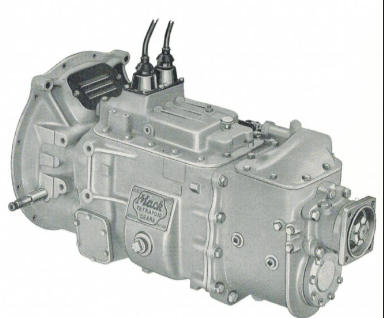
-
 1
1
-
-
- Popular Post
I try and stay realistic in my head when buying treasures
I look at things that hopefully look crap and I almost always buy things that most others would pass on
Everything will wear out and I prefer to rebuild it myself as I then know what short cuts I have taken
It is a truck and a old truck and I would be more concerned with buying it if it all looked Micky Mouse as I would have no idea what secrets its hiding
If it is a Maxidyne and Duplex you have a box that isnt really strong enough for the torque that motor will make
As I said before, just a quick glance underneath will show if its a tripple counter shaft transmission or not
Three caps laid out in a tri angle pattern and a triangle shaped box
-
 2
2
-
 1
1
-
These figures are quite staggering to me and hard to imagine
Thats like every man woman and child in some of our bigger provincial cities gone
Absolutely staggering, we think we have problems in Australia, I'm just glad I live here
Paul
-
 1
1
-
-
Oh yes, very very cool
I would love one
Paul
-
Is it possible to have a Thermodyne with a 6 speed
Yeah of course it is
Is it drivable like that ? For sure amd especially considering it's only a small truck it should be more than fine
When and if you go for another look
Just gran some photos of the engine and any plates on the engine
Get undernearh and take a quick picture of the transmission
With this basic information we on here should be able to tell you pretty much what you have
As in duplex or maxi torque
Grab a picture of the plate on the injector pump as well if you can
Plenty of help on the forum will be forth coming
Paul
-
 1
1
-
 1
1
-
-
A fun first run
Are they discs or drums
Either way put on blocks and pull the wheels off and take some photos and share and people will soon help with how to fix
Paul
-
On this day July 2nd in 1952, A Company, 1st Battalion, Royal Australian Regiment, participates in their first major action in the Korean War. Operation Blaze involved a raid on Hill 227 to capture a prisoner and destroy Chinese bunkers. Although it failed in its objective, the operation did give the brigade important experience against a strong enemy.
Learn more: http://ow.ly/lbI450Aij86
Photo: Korea. 2 July 1923. A Company, 1st Battalion, Royal Australian Regiment.
Pictured, left to right: Major D. S. Thomson of Sale, Vic; Captain P. J. Cook of Bellevue Hill, NSW; Lieutenant A. E. Pearse of Woodfield, Vic; Lieutenant G. J. Lucas of Clayfield, Brisbane, Qld, and Lieutenant C. M. G. Swindells of Cheshire, England of the 5th Royal Inniskilling Dragoon Guards, who is attached to the Company; and Lieutenant D. N. Williams of Kew, Vic.
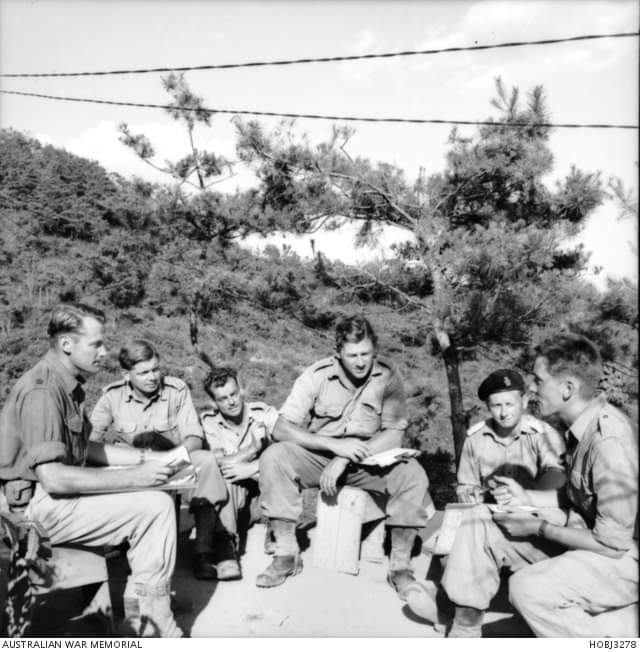
-
c November 1951.
For weeks Communist propaganda notices have been left where UN troops could find them. A soldier from the 3rd Battalion, The Royal Australian Regiment (3RAR), holds a notice which reads 'SURRENDER MEANS SAFETY. CHARGE MEANS DEATH.' The notices are a variation of the surrender leaflets which the Chinese were throwing out not long ago, and which Australian troops also declined to take very seriously.
Photographer: Phillip Oliver Hobson Photograph: HOBJ2565
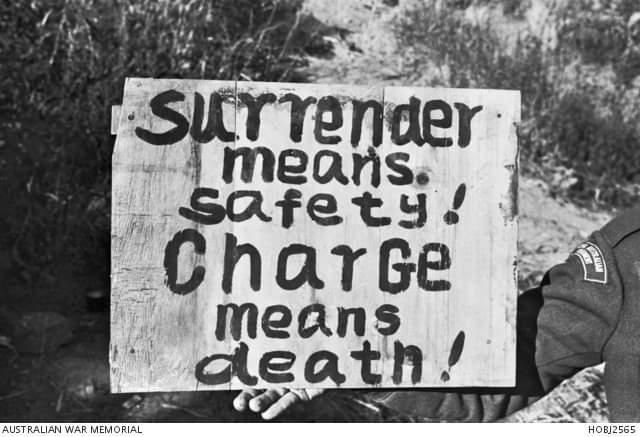
-
Vance Drummond was awarded the United States Air Medal for his “courage, aggressiveness, tactical skill … and devotion to duty”. According to the citation, “Sergeant Vance Drummond, 77th Interceptor Fighter Squadron, 4th Fighter Interceptor Group, distinguished himself by meritorious achievement while participating in aerial combat missions flying Meteor Mark Eight type aircraft against the enemy in North Korea from 1 September 1951 to 22 October 1951.”
Drummond wrote to his parents on 24 October: “Yes, Dad, the Meteor has an ejection seat, so there is no sweat about bailing out of them”.
On 1 December 1951, Drummond’s squadron engaged with enemy MiG-15s near Songchon, approximately 50 kilometres north-east of Pyongyang. On withdrawal, Drummond answered the leader’s checking radio call. However three aircraft, including Drummond’s Meteor, failed to return to base. Pilot Officer Ernest Donald Armit was declared missing in action, presumed killed. Drummond and Flying Officer Bruce Thomson had safely ejected from their aircraft, landing in North Korea. They were captured and sent to Pinchon-ni prisoner of war camp.
Read more: http://ow.ly/pBIj50Ahedz
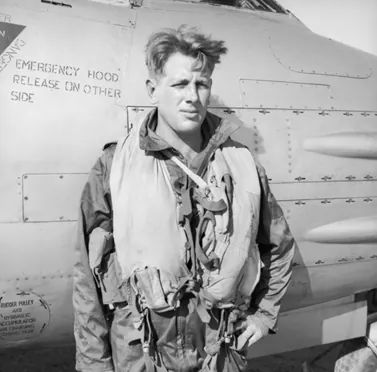
Image: Sergeant Vance Drummond beside his Gloster Meteor at Kimpo, South Korea in 1951. (JK0163)
-
Colonel Peter Scott is lucky to be alive. In October 1951, the 22-year-old Peter was an intelligence officer during the battle of Maryang San.
The fight for the strategically important Hill 317 was later described as “one of the most impressive victories achieved by any Australian battalion”, but for Peter it was one of the many close shaves he faced during his decorated army career.
“A lot of the other officers were just as young, if not younger than I was,” he said.
“There was artillery, bursting shells, and fights overhead, and it was just pandemonium really; dust and pieces of metal going in all directions.
“But sitting on top of 317 on the 7th of October, being shelled out of existence is the day that sticks in my mind.
“It was a big part of my life … and I can still visualise it now.”
Read the full story: https://www.awm.gov.au/articles/blog/Peter-Scott-DSO-and-the-battle-of-Maryang-San-Korea
Peter Scott observes the fall of 17 pounder anti-tank gun shell in Korea.
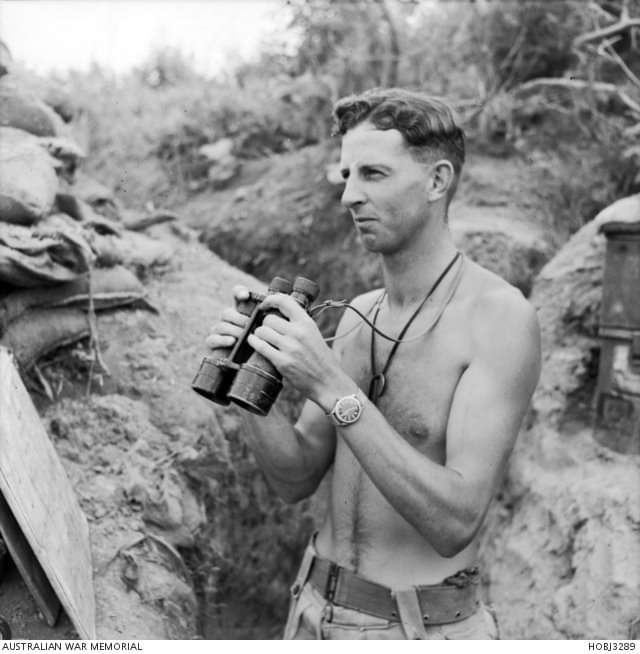
-
As I have said before, I haven't watched mainstream media since the GFC and my life just ticks along the same, actually it ticks along a lot better
I sleep better, I get less angry and I find the world still is pretty nice place or at least my world is
Everyone please add what ever you can or feel comfortable to share with us
It's a real shame as it appears by and large this is the forgotten war, we dont want let that happen
Paul
-
 1
1
-
-
In late June 1950, Major Stuart Peach and Squadron Leader Ronald Rankin were front page news. Sent to the Republic of Korea to report on growing tensions between North Korea and South Korea, they were thought to have been captured after Seoul fell to the invading North Korean army. While the men were missing, a report they had written was submitted to the United Nations Security Council.
Find out how these two Australians played a vital role in saving South Korea at the outbreak of the Korean War: https://www.awm.gov.au/articles/blogs/along-parallel-lines
Image: Major Stuart Peach (left) and Squadron Leader Ronald Rankin (centre) pose with correspondents near Taegu, Korea in June 1950. AWM P00716.051

-
 1
1
-
-
On this day 25th June in 1950 the North Korean People's Army crossed the 38th parallel and invaded the Republic of Korea, marking the beginning of the Korean War. Fighting between the United Nations multinational force and the North Korean Army (joined by the Chinese People's Volunteer Army in October 1950) ended in stalemate with the signing of the Korean Armistice Agreement on 27 July 1953.
Over 17,000 Australians served in Korea between 1950 and 1953 in the Australian Army, Royal Australian Air Force and Royal Australian Navy; 340 did not return home, and 30 were captured as prisoners of war.
Image: Unidentified members of 3RAR walk across the top of a hill through patches of snow during an operation in February 1951. (HOBJ2058).

-
 1
1
-
-
It was an icy winter’s eve in Korea on 24 January 1953 when 31 men from the 3rd Battalion, the Royal Australian Regiment (3RAR) gathered on Hill 355 for a snatch patrol. Led by Lieutenant Francis Smith, a 23-year-old Duntroon graduate, their objective was to capture a Chinese soldier in order to gather military intelligence.
Moving carefully down the frozen slopes of Hill 355, the men of 3RAR trudged slowly towards their target: a communications trench 1,500 yards behind Chinese lines. Despite the cold, Private Lionel Terry – known as “Bomber” – was warm and clean. Terry had taken a bird bath and changed his underwear just before the patrol. “The bastards won’t find me in dirty gear”, he had said laughing.
Read more: http://ow.ly/Paa350AaVr2
Image: Private Lionel Terry. This photograph was taken just after Terry’s bird bath on the afternoon of 24 January 1953 (P09413.001)

-
 1
1
-
-
Seoul, South Korea. c March 1951.
The capital, Seoul, seat of the Republic of Korea (ROK) Government. This picture was taken when restoration work had first commenced on the much bombed and shelled building, main landmark of Seoul, once known as the "Jewel of the East".
In the course of changing hands four times during the Korean fighting the city was almost reduced to rubble, but is now showing signs of returning to its former beauty. At left, three soldiers from the 3rd Battalion, The Royal Australian Regiment (3RAR), sitting in a jeep, inspect the work being done on the building.
Photographer: Phillip Oliver Hobson Photograph: HOBJ2143
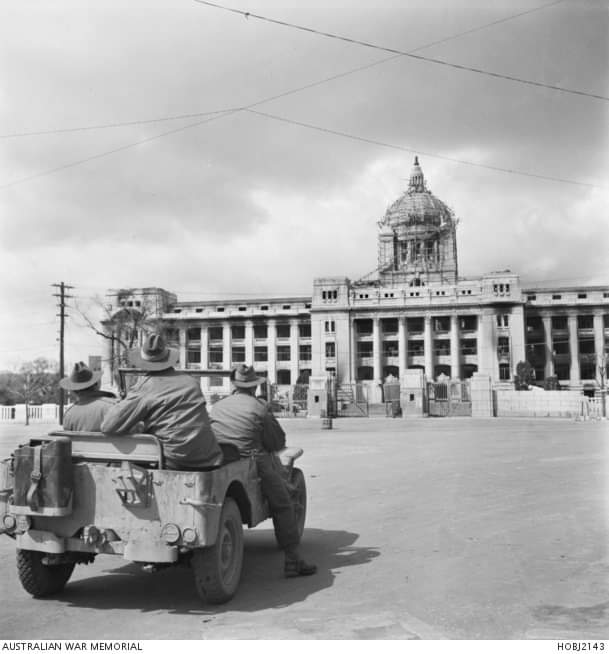
-
 1
1
-
-
“Rosemary” 77 Squadron’s lucky lady:
In April 1951, No. 77 Squadron, RAAF was withdrawn from Korea to re-equip with the Gloster Meteor Mk 8 fighter in Japan.
One of the squadron’s original Meteors would come to be known as “Rosemary” – Rosemary served with 77 Squadron in Korea from July 1951 until August 1953, flying 485 operational missions, including reconnaissance, ground attack and air to air combat. On 3 November 1951, Sergeant Max Colebrook DFM USAM damaged a MiG during a dogfight flying Rosemary. He was later awarded the Distinguished Flying Medal. Colebrook was later shot down on 30 March 1952, flying a different Meteor, and is one of 43 Australians listed as Missing in Action in Korea.
Today, Rosemary is part of the National Collection of the Australian War Memorial. Rosemary’s nose section is displayed in the Korean War galleries. http://ow.ly/vmVK50AbY7V
Her ladyship in action:
http://ow.ly/rcKb50AbY7UPhoto: Gloster Meteor Mk 8 jet fighter, serial number A77-368
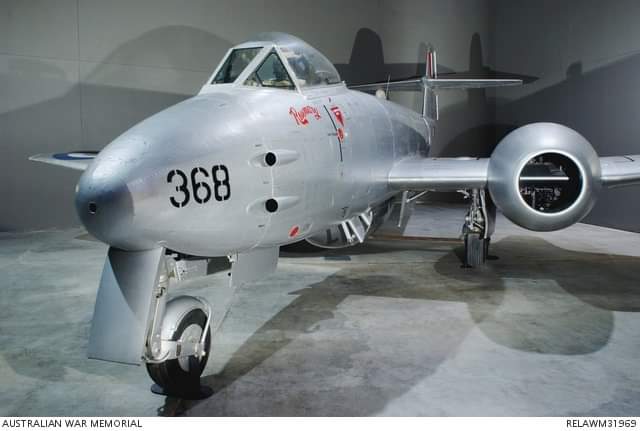

-
 1
1
-
-
One of the victims of the Korean War, Chan, an orphan, salutes Corporal Edward Dowell from the Royal Australian Army Medical Corps. He holds a wooden pull along toy with a duck in the centre, made by members of 1RAR for children in villages near the Jamestown Line area in June 1952. (HOBJ3125).

-
 2
2
-
-
Thirty Australians servicemen were captured during the Korean War. Private Bill Madden died in captivity and was posthumously awarded the George Cross. Don Buck, Tom Hollis, Keith Gwyther and Bob Parker from 3RAR banded together, attempting multiple escapes, and remaining close friends after the war. On 25 June 1952 – the second anniversary of the beginning of the war – 24 prisoners escaped. When they were re-captured several days later, Don Buck was identified as the ringleader and was heavily punished. The Australians were dubbed “reactionaries” and subjected to punishment and re-education, including beatings and torture.
Read more: http://ow.ly/SneV50AaUSm
Image: Chinese propaganda photograph: four Australian prisoners of war at Camp 5, Pyoktong, North Korea, wearing Chinese-issued padded uniforms. Left to right: Privates Bob Parker, Keith “Mo” Gwyther, Tom Hollis and Corporal Don “Old Man” Buck. (P03874.006)
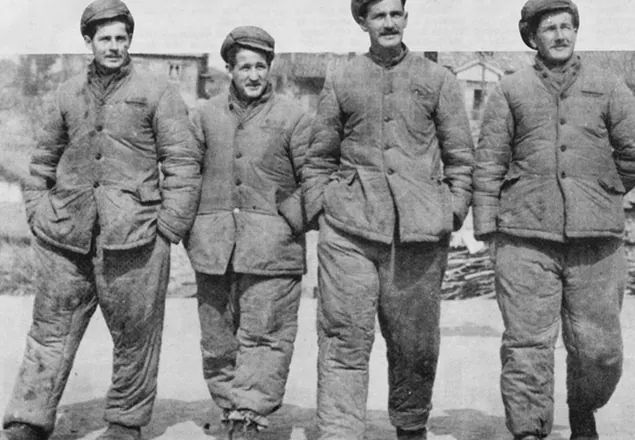
-
 1
1
-



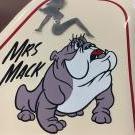

First Convoy across America
in Antique and Classic Mack Trucks General Discussion
Posted
Thats what the title is on the Australian truck forum
Plenty of AC Macks, FWD's and a Holt crawler or two and lots of other jiggers I have no idea of, maybe Sterling or Federal but no idea at all
Paul